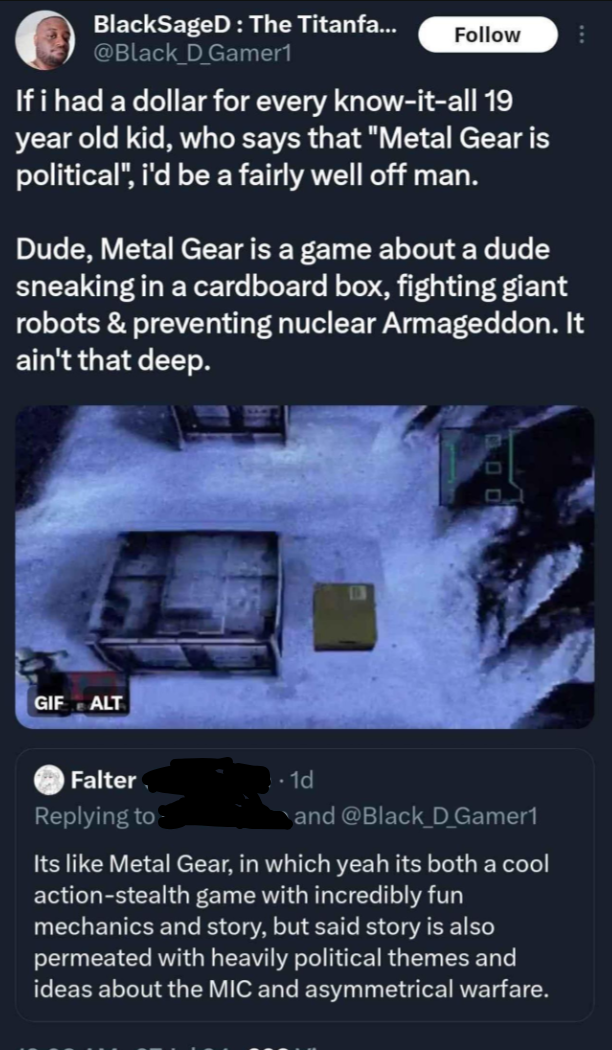163
you are viewing a single comment's thread
view the rest of the comments
view the rest of the comments
this post was submitted on 29 Jul 2024
163 points (99.4% liked)
games
20507 readers
315 users here now
Tabletop, DnD, board games, and minecraft. Also Animal Crossing.
-
3rd International Volunteer Brigade (Hexbear gaming discord)
Rules
- No racism, sexism, ableism, homophobia, or transphobia. Don't care if it's ironic don't post comments or content like that here.
- Mark spoilers
- No bad mouthing sonic games here :no-copyright:
- No gamers allowed :soviet-huff:
- No squabbling or petty arguments here. Remember to disengage and respect others choice to do so when an argument gets too much
founded 4 years ago
MODERATORS

This is because real analysis of literary works always requires a political angle -- even "aesthetic" art is political in its anti-politics.
The denial of the political at the secondary level (can't indoctrinate kids!) is why media analysis and literary analysis is so truncated. Students essentially learn symbols without the context or political valence of those symbols (or in the most cursory way). So students are taught to look for symbols, but lack the political/literary/historical context as to why those symbols are meaningful.
After all, to do so involves immersing yourself in the world the text was made, so that you can recognize the ideological, historical, and political contexts that the author brings to bear on the work (and come out as symbols or other textual-rhetorical choices and effects).
This isn't to say a student can't also bring their own political context to bear -- the classic example is understanding the racism of Shakespeare's Shylock after the holocaust in a new way. But to truly recognize what's going on in a text, you need a lot of context that the secondary environment (large class, quick timeframe, standardized tests) can't provide. So students learn a kind of bastardized analysis that lacks the depth that you really need for this kind of thing.
We're all